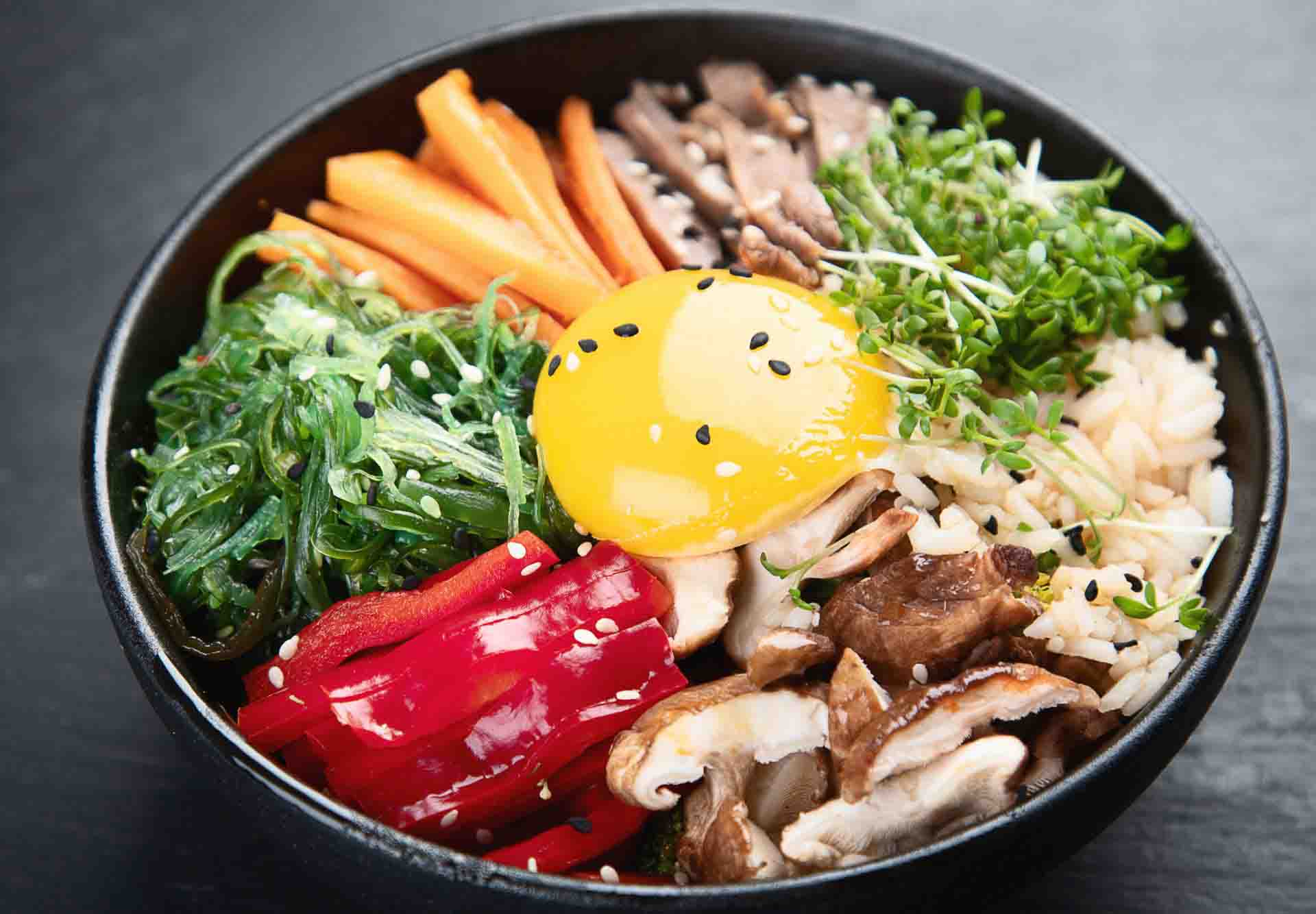I believe that by this point in time, everybody who cares even slightly about Asian cuisine has sampled respectable bibimbap. But this Salmon Bibimbap Korean Rice Bowl recipe takes it to a whole another level.
Bibimbap literally translates to “mixed rice,” but I always imagined it to be a more involved dish, especially with all the beautiful hot stone bowls available.
As depicted in my favorite, most addicting K-dramas (perhaps not THE most reputable source), Korean families commonly eat by quickly mixing rice with “side dishes” or ban chan, adding a dash of gochujang and then digging in.
My goal was to make things seem less complicated, so I came up with this salmon bibimbap recipe, which requires only a couple more steps beyond simply purchasing all the bibimbap ingredients from a Korean grocery store.
Here, instead of using fish marinated in the traditional way (which typically entails combining sauces, onion, garlic, and often melon together to form a sweet and salty mixture), we’re using salmon seasoned with just salt and pepper and seared to a light crunch.
The obviously unhealthy things you’ve been eating have left your palate feeling dull, but this salmon bibimbap will revive it in no time.
With its extra helping of salmon, this bibimbap is the healthiest thing you’ll ever eat. It’s a healthy and well-rounded meal with plenty of lean protein. And adjust the amount of kimchi to your taste.
You can eat this without feeling too guilty, and it’s great.
INGREDIENTS:
- 4 cloves of minced garlic
- 4 cooked sunny side up eggs
- 2 bunches of watercress
- 2 julienned carrots
- 1 salmon steak or filet
- 2 cups of uncooked white rice
- 2 cups of bean sprouts
- 1 cup of kimchi
- 1 tablespoon of soy sauce
- 1 teaspoon of toasted sesame seeds
- ½ teaspoon of sesame oil
- light olive oil
- Salt and pepper
- Roasted seaweed flakes or sheets (cut into slivers)
- Gochujang
INSTRUCTIONS:
- Two cups of dry rice should be prepared in advance, using any manner you like.
- Next, put 1 tablespoon of oil into the pan and heat it over medium heat. Add a pinch of salt and stir-fry the carrots for approximately a minute. Toss in a bowl and put aside for later.
- The next step is to stir-fry the bean sprouts in the same way the carrots were prepared.
- Prepare the watercress next. Separate the bunches and give them a good rinse.
- In the same skillet, you used to sauté the carrots, heat the remaining 2 tablespoons of oil over medium heat. Add the garlic and heat for another 15-20 seconds, stirring constantly. Stir fry the watercress with a half teaspoon of salt until it has wilted entirely. Take off the heat and mix in with soy sauce, sesame seeds, and sesame oil. Ignore it for the time being.
- Next, we’ll prepare the salmon. Prepare both sides with salt and pepper. Bring 3 tablespoons of oil to a pan’s temperature of medium-high heat. Include the salmon in the dish. Wait for about 5 minutes or until the food has been browned. After 5 minutes, turn the meat over and cook for an additional 5. Given the size of your fish, you may need to increase the cooking time. Our salmon steak was quite thick. Don’t guess about doneness; just make a little incision in the middle with a knife and see if it’s done. Since the salmon will be flaked before serving, presentation is not important.
- Put aside the kimchi and seaweed flakes (or roasted seaweed sheets, if you want) while the salmon cooks. Prepare one egg per serving, too.
- Salmon needs to be cooked per the instructions on the package before the bibimbap can be assembled.
- Place some rice in a bowl and top it with an egg and a few pieces of flaked salmon. Feel free to pile on as much watercress, carrot, bean sprouts, kimchi, and seaweed as your stomach can handle. Add some gochujang for flavor at the end. Use a large spoon and stir it up well before you dig in.
